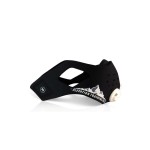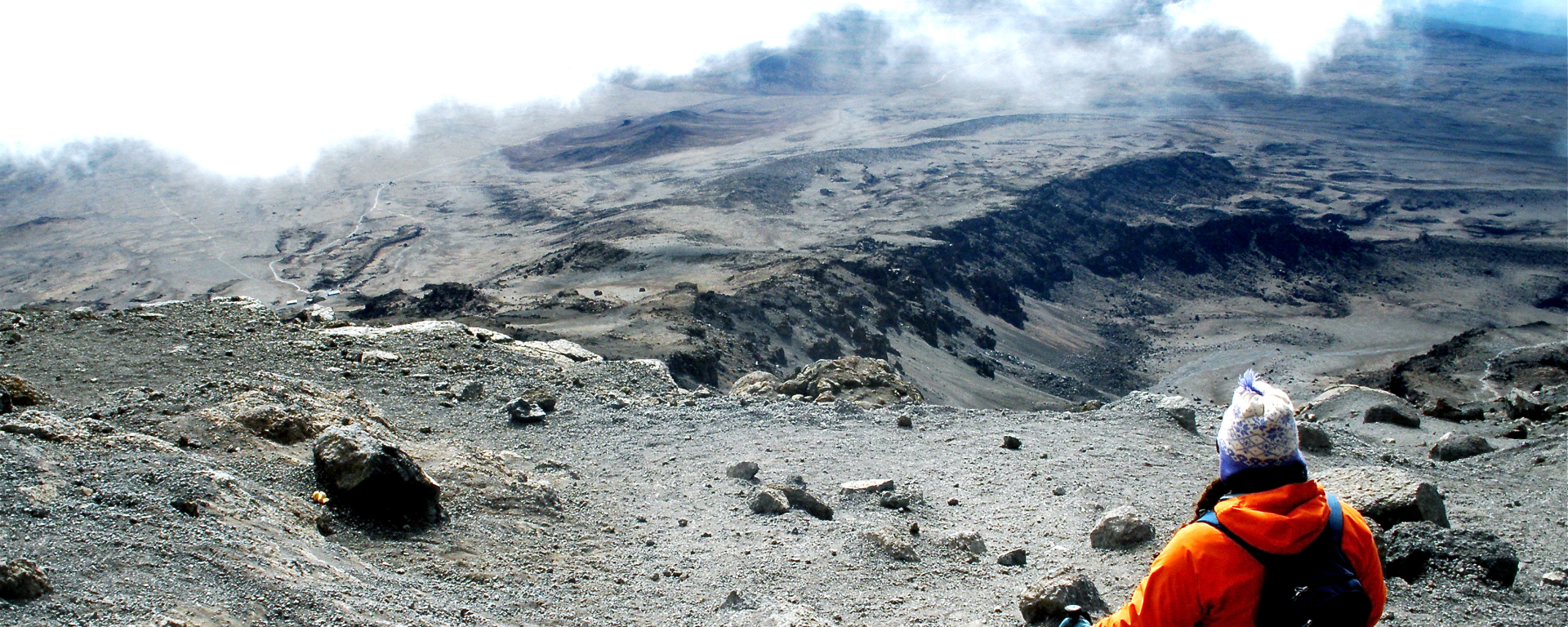ACUTE MOUNTAIN SICKNESS ON KILIMANJARO
Acute Mountain Sickness On Kilimanjaro – also know as altitude sickness and altitude illness – is a pathological effect on humans caused by going to high altitudes too fast, where lower levels in oxygen inhibit normal physiological processes.
AMS comes in three main forms – mild, moderate and severe. Mild AMS is similar to a hangover. Common symptoms include headaches, nausea and fatigue.
As the condition deteriorates these symptoms become more acute and new symptoms present, including vomiting, ataxia (loss of coordination) and shortness of breath.
At its most severe, the conditions of High Altitude Pulmonary Edema (HAPE) and High Altitude Cerebral Edema (HACE) can occur which are both fatal. Early warnings that one is suffering from HAPE or HACE includes shortness of breath while resting, loss of mental capacities and hallucination, coughing that brings up a white frothy fluid, very tight chest and loss of consciousness.
Without immediate descent and treatment HAPE and HACE are fatal.
The good news is that the body is relatively well equipped to deal with the challenges of high altitude if given enough time. This process is known as acclimatization.
Most trekkers start feeling the effects of altitude at above 2,400 meters. At this altitude the body needs to start adapting to the low partial pressure of oxygen and deploys a number of ingenious physiological responses such as breathing deeper and faster to encourage better oxygen exchange in the lungs, and increasing red blood cell count which allows more oxygen to be carried in the blood.
Ascending more that 500 meters a day from 2,400 meters increases the probability of AMS, as does exercising vigorously at high altitudes.
ACUTE MOUNTAIN SICKNESS ON KILIMANJARO
Unfortunately, due to the ascent profile on Kilimanjaro and the nature of trekking, both rapid ascent and exercise are unpreventable, and hence AMS – Acute Mountain Sickness on Kilimanjaro is very common among trekkers.
Over the years new Kilimanjaro route profiles have been created to flatten and lengthen the summit assault passages and incorporate climb high, sleep low opportunities. These have helped to some degree but in general the average trek on Kilimanjaro is still very rapid.
Academics have been keenly studying the impact of Acute Mountain Sickness on Kilimanjaro and their findings illustrate the systemic issues of rapid ascent.
Here are summaries from three academic studies:
2006-07 Finnish Study
In 2006-07 Finnish academics, Heikki Karinen, Juha Peltonen, and Heikki Tikkanen, conducted an observational study of the prevalence of Acute Mountain Sickness among Finnish trekkers on Mount Kilimanjaro.
The researchers got 112 Finnish trekkers (54 men, 58 women, mean age 51 ± 10 years), who were using the Marungu route, to complete a daily Lake Louise self-report (LLS) and clinical assessment questionnaire with the help of a trainee Finnish guide during their trek.
Of the total sample group, 59 trekkers (53%) reached Gilman’s Point or Uhuru Peak – admittedly the Marangu route provides a poor acclimitization route profile. Nonetheless, their findings on AMS incidence among the trekkers was shocking – 75% were clinically shown to be suffering from AMS.
2010 Research
In another broader study, Incidence and predictors of acute mountain sickness among trekkers on Mount Kilimanjaro by Jackson et al, the researchers studied a group of trekkers on three different route itineraries. At 2,743m they recruited 177 trekkers (average age 31 with a range of 18-71). Like the previous study these trekkers completed the LLS together with an epidemiological questionnaire. Then at 4,730m another set of trekkers, this time 189 were recruited (demographics: male = 108, female = 68, mean age 33, range 18-71). Note: 136 had been followed up from 2,743 m.
Here are their findings:
At 2,743m, 3% (5/177) of climbers were AMS positive, and 47% (89/189) of climbers from all itineraries were AMS positive at 4,730m. Of climbers attempting the Marangu itineraries, 33% (45/136) were taking acetazolamide (Diamox). This group had a similar rate of AMS and no statistical difference in severity of LLS when compared with those not taking prophylactic drugs. They also did not demonstrate a difference between the incidence of AMS in climbers who did or did not take a rest day at 3,700m. However, there was a significant reduction in the incidence of AMS among pre-acclimatized subjects”.
The researchers concluded that the incidence of AMS on Kilimanjaro is high, and surprisingly found that there was no evidence that the prophylactic acetazolamide (Diamox) or a single rest day helped.
2012 Research
Finally, in a 2012 study called, Twice-Daily Assessment of Trekkers on Kilimanjaro’s Machame Route to Evaluate the Incidence and Time-Course of Acute Mountain Sickness by Joel Meyer, looked at the role of ‘sleeping low’ on day 3 of the Machame Route.
His study looked at twice-daily AMS data from 28 healthy adult trekkers and found the incidences of AMS and severe AMS were: 0% and 0% (day 1); 11% and 4% (day 2); 25% and 4% (day 3); 25% and 0% (day 4); 86% and 61% (summit day 5); and 7% and 0% (day 6), respectively. 86% and 61% on summit day!!
He also found that HACE occurred in 4 of 28 trekkers (14%)!
He concluded that the 6 day Machame route may ‘delay the onset but does not ultimately protect against AMS’.
TO CONCLUDE
It is very clear from these academic studies that AMS is a systemic issue on Kilimanjaro due to the rapid ascent profile.
With this in mind we recommend following these basic practice principles:
- If you have a chance to pre-acclimatize before trekking Mount Kilimanjaro, do so. A good option in Tanzania is to trek the neighboring Mount Meru (4,565 m) before attempting Kilimanjaro
- If you are a novice high altitude trekker then choose a route itinerary that is at least seven days long (6 up, 1 down). In our opinion, the seven day Machame or 7/8 day Lemosho are the most suitable routes for the average trekker
- Ensure the route allows for a good climb high, sleep low opportunity (both the Machame and Lemosho do)
- When on the mountain make a point to go as slowly as possible, do not overexert yourself, even on the lower reaches
- Drink loads of fluid (2.5-4 liters a day)
- Do not drink alcohol, take stimulants, smoke or consume caffeine on the mountain
- We recommend taking acetazolamide (Diamox) –
Finally, as recommended by the charity, Altitude.org, always remember these 3 Golden Rules when at altitude:
- If you feel unwell, you have altitude sickness until proven otherwise
- Do not ascend further if you have symptoms of altitude sickness
- If you are getting worse then descend immediately
On a final note, trekking Kilimanjaro is a wonderful experience. It doesn’t need to be life-threatening if you follow the advice above, listening to your climbing partners and guide and remember that getting to the summit is not as important as getting down off the mountain in one piece.
You can also find a complete Kilimanjaro gear packing list here.
Recommended Gear for your Kilimanjaro Adventure
 This resistance training mask from the guys at Training Mask helps simulate the effects of altitude. Used primarily by athletes to improve performance at sea level, the manufacturers claim the mask can help prepare trekkers for altitude. We have not personally tested the mask but from our research the reviews seem rather positive. Check out the training mask on Amazon.
This resistance training mask from the guys at Training Mask helps simulate the effects of altitude. Used primarily by athletes to improve performance at sea level, the manufacturers claim the mask can help prepare trekkers for altitude. We have not personally tested the mask but from our research the reviews seem rather positive. Check out the training mask on Amazon.
READ MORE USEFUL INFORMATION
- Acclimatization and Altitude Sickness on Kilimanjaro
- Can Anyone Climb Mount Kilimanjaro – Incredibly Inspiring Summit Stories
- When is the Best Time to Climb Kilimanjaro?
- Kilimanjaro Travel Insurance – Am Must Have – Better Safe than Sorry…!
If you Still Have Questions about Acute Mountain Sickness On Kilimanjaro – AMS, please feel free to Contact Us.


